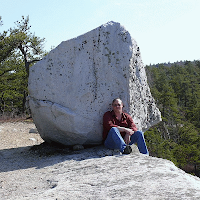 This course examines the earliest origins of
astronomy, our oldest science. The first half of the course will introduce
students to the night sky. Topics covered will include the movements of the
Earth and other solar system objects; the phases and cycles of the Moon; the
origin of seasons, solstices, equinoxes, and eclipses; constellations and
celestial navigation; and how ancient astronomers used their observations in
developing civilization’s earliest calendars. The second half of the course will be a broad
survey of the historical development of astronomy from Paleolithic times up to the
Copernican revolution of the Renaissance Period.
This course examines the earliest origins of
astronomy, our oldest science. The first half of the course will introduce
students to the night sky. Topics covered will include the movements of the
Earth and other solar system objects; the phases and cycles of the Moon; the
origin of seasons, solstices, equinoxes, and eclipses; constellations and
celestial navigation; and how ancient astronomers used their observations in
developing civilization’s earliest calendars. The second half of the course will be a broad
survey of the historical development of astronomy from Paleolithic times up to the
Copernican revolution of the Renaissance Period. Cosmologies from
representative cultures around the world will be examined along with
significant archaeoastronomy sites including the Egyptian pyramids, Stonehenge,
Newgrange, Chichen Itza, Machu Picchu, Chaco Canyon, the Big Horn Medicine
Wheel, and others.
Cosmologies from
representative cultures around the world will be examined along with
significant archaeoastronomy sites including the Egyptian pyramids, Stonehenge,
Newgrange, Chichen Itza, Machu Picchu, Chaco Canyon, the Big Horn Medicine
Wheel, and others.If you've ever wondered how the phases of the Moon work, how ancient people knew about solstices and equinoxes, what we really know about Stonehenge, or what the Mayan calendar is all about, this course is for you! I'll also introduce you to a cool (and free) planetarium program that will show you what's in the night sky at any time or place, show you how to make a variety of simple sundials, explain astrolabes (the earliest computers), and ask you to go outside occasionally and look up to get in tune with the sky and how it changes over the course of the semester.
 There are no prerequisites for this course other
than being at a college level. If you are a student that requires remedial math
and/or English courses, this class would be a challenge (don't be scared off,
by math, however, the BIGGEST predictor of student success is a genuine interest in the
topic and it's simple high-school-level math!).
There are no prerequisites for this course other
than being at a college level. If you are a student that requires remedial math
and/or English courses, this class would be a challenge (don't be scared off,
by math, however, the BIGGEST predictor of student success is a genuine interest in the
topic and it's simple high-school-level math!).
This fully online course is available through
the State University of New York SUNY Learning Network and can be taken from
anywhere in the world that you have a reliable Internet connection. While you
register with my college, you don't have to be a student there to take the
class.










